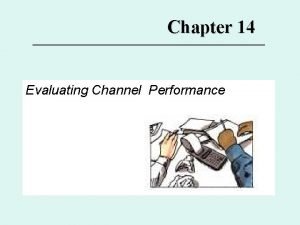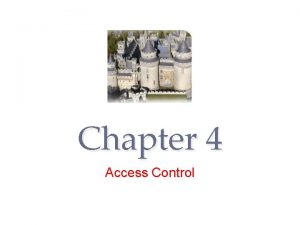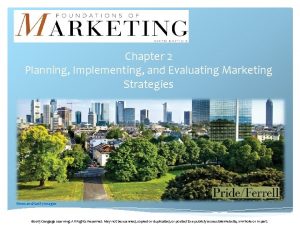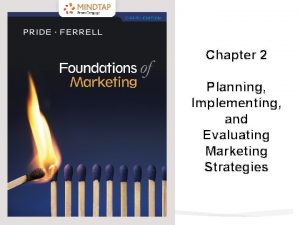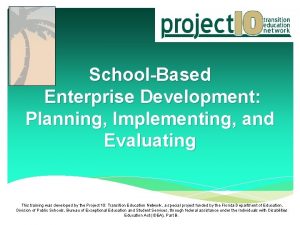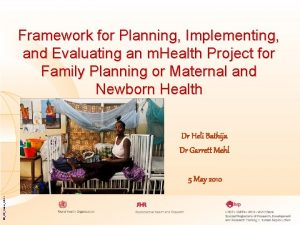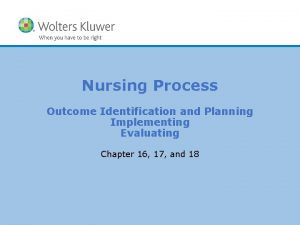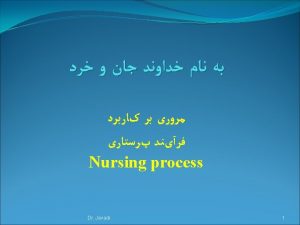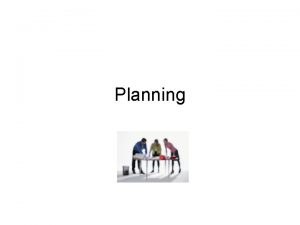Chapter 11 PLANNING IMPLEMENTING AND EVALUATING ART Copyright



















- Slides: 19

Chapter 11 PLANNING, IMPLEMENTING, AND EVALUATING ART Copyright 2012 Cengage Learning. All Rights Reserved.

Objectives • After reading this chapter, you should be able to: – Describe the PIE cycle in curriculum development. – Identify the major developmental goals in early childhood education. – Compare and contrast strategies for integrating art into the early childhood curriculum. – Compare and contrast the following curricular approaches: planned, emergent, and Project Approach. – Provide a definition and rationale for capitalizing on teachable moments. – Make and use clay and play dough with young children. Copyright 2012 Cengage Learning. All Rights Reserved.

Katz (1987) identified four types of learning: • Knowledge is information children construct through hands-on, multi-sensory experiences and exploration. • Skills are abilities or techniques that build on and apply knowledge. Skills are developed through repetition and practice. • Dispositions are inclinations or habits of the mind such as curiosity or flexibility. A disposition is an orientation to the world one has learned from working with enthusiastic role models. • Feelings are the emotions associated with a learning experience. Copyright 2012 Cengage Learning. All Rights Reserved.

Curriculum development involves planning what to teach and how to teach it. • Objectives must be developed. • Learning activities must be organized. • Centers must be stocked with materials, equipment, and supplies that are relevant to the curricular theme. Copyright 2012 Cengage Learning. All Rights Reserved.

One way of planning and developing a curriculum is to ask a series of questions. WHO? — Who am I as a teacher? What types of things do I know about and do well? What special interests or skills do I have? What do I value and believe about early childhood? Who are my children—ages, needs, interests, abilities, likes, dislikes, family, culture, background? WHAT? — What do I want my children to learn, know, or be able to do? WHY? — Why am I planning this activity? Why should my children know, learn, or be able to do it? Why is this important or relevant? HOW? — How will I carry out this activity? How will I present it? How will I motivate the children or capture their interest? How will I know if I have been successful? How will I know if the children have learned anything? How many children can do this activity at one time? How will it be done— individually or in small groups on a rotating basis? WHERE? — Where will this activity take place? WHEN? — When will this activity take place? How long will it take? Copyright 2012 Cengage Learning. All Rights Reserved.

Curriculum Development Is as Easy as PIE • Plan • Implement • Evaluate Copyright 2012 Cengage Learning. All Rights Reserved.

Easy as PIE (continued) • Planning helps us decide where we want to go. – Do we want to take the fastest or the scenic route? – What do we need to take along? – All these concerns are taken into account during our planning. Copyright 2012 Cengage Learning. All Rights Reserved.

Easy as PIE (continued) • Implementing is similar to actually taking the trip. – We think we have done a good job of planning and now are ready to depart. Implementing our trip involves reading the map, stopping as planned, and allowing for unexpected diversions. Copyright 2012 Cengage Learning. All Rights Reserved.

Easy as PIE (continued) • Was the trip worth it? Did it cost too much or take too long? Were the benefits appropriate to the expense? Would you do it again? How could you improve on the trip? All these questions are part of evaluating the trip. Copyright 2012 Cengage Learning. All Rights Reserved.

Teacher’s Knowledge of Child Development + Teacher’s Values and Beliefs Goals Long-term outcomes for children’s participation in the program Objectives Short-term, observable statements of what children will learn in a specific activity Management Concerns Plan instructional activities LMP: insert figure 112 Implement instructional activities Evaluate children’s learning Figure 11 -2 PIE model for curriculum planning. Copyright 2012 Cengage Learning. All Rights Reserved.

What Is a Goal? • A goal is a long-range target, a broad description of a desired outcome. • Most early childhood programs have established goals that identify what children will be working toward throughout the course of the school year. • Goals give direction or focus to what teachers do with children on a monthly or yearly basis. Copyright 2012 Cengage Learning. All Rights Reserved.

What Are Objectives? • Objectives are the bridge between goals and activities. • They are specific and short-term intended outcomes. • As a result of a given activity, we expect children to be able to say, do, or demonstrate what they have learned. • Objectives can be worded loosely or in precise behavioral terms. Regardless of the wording, teachers need to be able to set objectives and develop activities to meet them. Copyright 2012 Cengage Learning. All Rights Reserved.

Art as a Separate Activity DAILY LESSON TEACHER: Mr. Kent CLASS: Four- and five-year-olds DATE: Monday Areas/Activities: • Art—painting and printing with sponges cut into different geometric shapes • Music—sing a “silly song” I know an old man who had a black dog. . . • Movement—alphabet march in a circle • Concept—science (for Monday) Sort and discuss attributes of nature specimens. • Bring in pinecones, leaves, grass, twigs, stones, acorns, and so on. • Group—discuss weekend activities. Encourage Ariel to discuss her hospital stay. • Snack—vegetable slices and cottage cheese dip. Double-check for allergies to milk products. • Play—continue work on airport (block corner); restock shelves in grocery store (housekeeping). Mr. Kent wished he had discovered this art activity last week, when they were studying geometric shapes in concept time. He did not think to find a song or movement activity that would tie in. Mr. Kent’s approach is not bad or wrong. It is fragmented, with the different learning experiences left without integration or relation to each other. Copyright 2012 Cengage Learning. All Rights Reserved.

Art Used to Extend or Reinforce Learning in Another Curricular Area DAILY LESSON TEACHER: Mrs. Gomez CLASS: Four-year-olds DATE: Monday Welcome: • do calendar • sing good morning song • read Little Red Hen Blocks: • take large hollow blocks outside (with Mrs. Raines) if • nice day Dramatic Play: • introduce doctors and nurses, tools, careers • (encourage hospital play) Table Toys: • put out Legos®, new puzzles, flannel boards Concept Time: • math (Monday)—discuss geometric shapes Creative Arts: • sponge painting with geometric shapes Group Time: • show-and-tell with geometric shape pictures Copyright 2012 Cengage Learning. All Rights Reserved.

Art as a Superactivity Integrating Several Curricular Areas • • • Children counted and classified the different sponge shapes on the basis of color, shape, and size (math). They observed a dry sponge being submerged in water. They noted differences between wet and dry sponges. They put the wet sponge in the sun and predicted and observed what would happen (science). They took a field trip outdoors to identify geometric shapes in nature (science). They played shape bingo (visual discrimination, pre-reading). They discussed things that are hard and soft and the many uses of sponges (speaking, creative thinking). They listened to a story on shapes (listening). They printed their name or initials with rectangular shapes dipped in paint (prewriting). They created their own geometric shape pictures (art). They listened to a march and participated in a shapes dance (music and movement). They moved like dry stiff sponges, sponges in a bubble bath, sponges being squeezed dry, wet sponges lying in the sun on a beach (movement). They discussed diving for sponges and people who dive for a living (social studies). Copyright 2012 Cengage Learning. All Rights Reserved.

Art as an Integrated Part of an Extended Unit of Study LMP: insert figure 11 -6 Copyright 2012 2009 Cengage Delmar Learning. Copyright Learning. All Rights Reserved.

Curriculum Spontaneous or Emergent Curriculum • is child-centered • focuses on the child’s processing • stresses children’s interests and choices • offers challenge and risks • meets individual needs • is flexible and open • matches children’s needs and interests • is a joint venture between teacher and child • empowers the child Planned Curriculum • is teacher-centered • focuses on the teacher’s product • stresses program goals and objectives • provides security and familiarity • meets needs of the group • is predictable and routine • may not match children’s needs and interests • is a solitary venture • empowers the teacher Copyright 2012 Cengage Learning. All Rights Reserved.

Art as a Child-Centered Pursuit • Child-centered art is the type that children discover, invent, construct, and create on their own. • It empowers them to be autonomous and in control. • It may not look like something but children take great pride in their individual accomplishments. • Child-centered art is deceptively simple but it does not just happen. • It occurs when teachers plan and subtly set the stage. Copyright 2012 Cengage Learning. All Rights Reserved.

1/3, 1/3 Rule • One-third of your instructional activities should be whole group • One-third of your instructional activities should be small group • One-third of your instructional activities should be independent Copyright 2012 Cengage Learning. All Rights Reserved.
 Planning and implementing crm projects
Planning and implementing crm projects Chapter 7 strategic management
Chapter 7 strategic management Strategic management chapter 7
Strategic management chapter 7 Implementing strategies: management and operations issues
Implementing strategies: management and operations issues Tripod of pricing
Tripod of pricing Designing and implementing brand marketing programs
Designing and implementing brand marketing programs Designing and implementing brand architecture strategies
Designing and implementing brand architecture strategies Matching structure with strategy
Matching structure with strategy Toyota brand architecture
Toyota brand architecture Ch 7
Ch 7 A channel member performance audit may be described as:
A channel member performance audit may be described as: Implementation of hrd program
Implementation of hrd program Implementing merchandise plans
Implementing merchandise plans Principle in portfolio assessment
Principle in portfolio assessment Qsen teamwork and collaboration examples
Qsen teamwork and collaboration examples Challenges of implementing predictive analytics
Challenges of implementing predictive analytics Implementing organizational change spector
Implementing organizational change spector Implementing strategies marketing finance/accounting
Implementing strategies marketing finance/accounting Access rights definition
Access rights definition Simplified scoring model in project management
Simplified scoring model in project management










